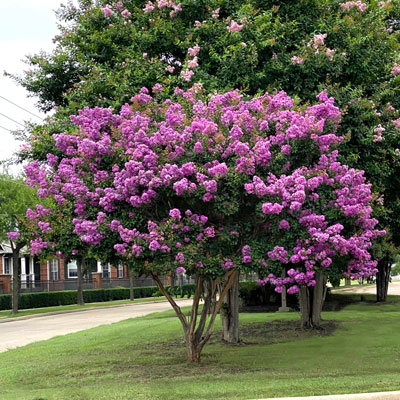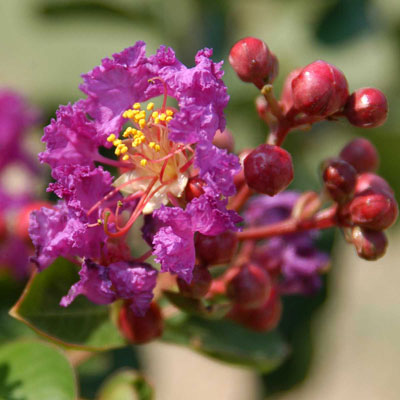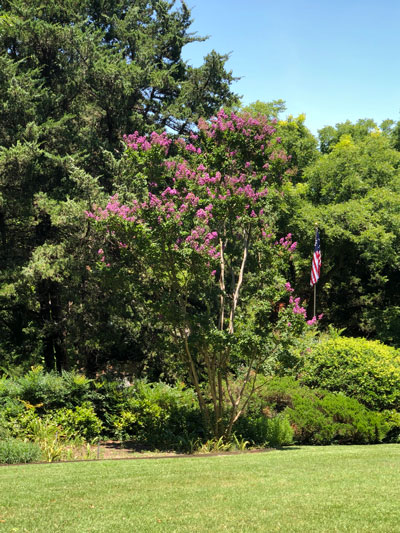My Favorite Crape Myrtle!
Like most young men, my first loves in crape myrtles were the red types. Watermelon Red, Dallas Red, Firebird, Country Red and on to Dynamite and Red Rocket. I couldn’t get enough red.
And there was a time when I liked the purity of the whites. Glendora White was my choice (and still is). I liked Natchez, but then it froze to the ground a few times too many in Metroplex landscapes (including mine), and its flower heads seemed too open and fluffy. I found its sister seedling, Sarah’s Favorite White, to be a much nicer plant.
Light lavenders and pinks were great, but they never really scored my affection as much as the others.

And then along came the purples. I remembered a sign I once saw in an antique mall. It was in with a bunch of ladies’ things, and it said, “When I grow old I shall wear purple.” (I’m an older guy now, so I allow myself to tell that story.)
As I’ve gotten older I’ve come to realize that purple crape myrtles are fabulous. They’re unusual. They’re cooling. And, most importantly, they blend with just about any other crape myrtle (even reds) and with all tones of bricks and other hardscaping colors. You can plant them just about anywhere.

And so I announce to you here my all-time favorite crape myrtle: the variety Catawba.
The backstory on Catawba…
Catawba was one of the very first introductions (perhaps the very first) from Dr. Don Egolf, research horticulturist with the United States National Arboretum in Washington D.C. I had the chance to work with Don a few times, and his goal was to find crape myrtles that were equal to or better than any of the colors we already had, but that also had immunity to powdery mildew.
Don Egolf spent his career breeding crape myrtles (and roses-of-Sharon, dogwoods and magnolias, among other plants). I was told that he grew 200,000 seedlings from his crape myrtle crosses alone, and I believe the final count was 29 introduced varieties, each selected for its mildew resistance. Dr. Egolf was extremely picky about his introductions. When he said he was looking for mildew-proof selections that were better than those already in the marketplace, he meant every word of it.

Catawba was his first, followed by names like Muskogee, Zuni, Powhatan, Natchez, Kiowa, Caddo, Hopi, Comanche, Yuma, Tuskegee, Biloxi, Seminole, Choctaw, Potomac, Wichita, Tuscarora, Sioux and eventually Arapaho, along with many others along the way. If you notice any familiar thread among the variety names, Don was from Oklahoma, and he named all of his crape myrtle introductions for Native American tribes from his home state and beyond.
Catawba is a medium-sized variety, growing to 16 to 18 ft. tall at maturity. If you let it grow without topping it (Thank you for not topping any crape myrtle!) you can count on three rounds of blooms each summer. Fall color will be rich shades of yellow, orange and red many years.

I bought my first Catawba in 1980. It actually grew to 20 ft. tall because it got squeezed between a Lacey oak and a native eastern redcedar. We moved it 6 or 7 years ago, and it’s now growing in full sunlight in a spot where it will never again have competition. It has filled out and grown broader. I’m pretty sure it will not grow any taller.
Friends who ask for my help in planning their landscapes generally can count on seeing a Catawba crape myrtle show up to mark some focal point or another. This is one of the great plants for Texas.

